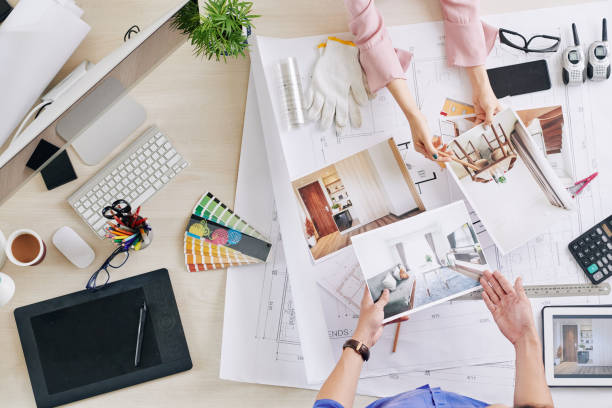Transitioning from a minimalist lifestyle to a maximalist one doesn’t necessarily mean inviting chaos into your life. By thoughtfully curating and displaying your belongings, you can achieve a richly layered and visually intriguing space without the clutter. This article will guide you through the process of making the shift while maintaining balance and harmony in your surroundings.
Assess Your Current Space
Before diving into maximalism, take a good look at your current minimalist setup. Identify the aspects you love and make a note of what you’d like to expand on. Understanding your baseline will help you maintain some continuity as you begin to add more. This assessment will also aid in avoiding the addition of unnecessary items that don’t contribute to the overall aesthetic or function of your space.
Create a plan based on this assessment. You should start by:
- Listing items or categories you’d like to increase.
- Determining the focal points for each room.
- Identifying unused spaces that can serve as new display areas.
By having a clear vision, it becomes easier to make mindful choices as you transition.
Embrace Bold Colors and Patterns
One of the hallmarks of maximalism is the use of bold colors and intricate patterns. To avoid chaos, start by selecting a color palette that resonates with you. This will create a cohesive look even as you introduce a variety of elements. Consider using patterns that complement rather than compete with each other. For example, you could pair a floral print with stripes, using a common color to bind them together.
It’s also useful to follow the 60-30-10 rule, where 60% of the space uses a dominant color, 30% a secondary color, and the remaining 10% an accent color. This layered approach provides both variety and unity, preventing visual overload while promoting a vibrant, maximalist atmosphere.
Incorporate a Variety of Textures and Materials
Maximalism thrives on diversity, and incorporating different textures and materials is a great way to achieve this. Think beyond just fabrics; consider wood, metal, glass, and natural elements. Mixing textures not only adds depth to your space but also offers a tactile experience that enhances the visual complexity without adding clutter.
Start with textiles like throw pillows, rugs, and curtains, then move on to furniture pieces and decorative objects. For example, you could pair a velvet sofa with a glass coffee table and a wooden bookshelf. The juxtaposition of different textures creates a rich, inviting atmosphere that embodies the essence of maximalism.
Curate Your Collections
Maximalism isn’t about filling your space with random items; it’s about displaying things that have meaning and tell a story. Curate your collections by choosing items that reflect your personality or interests. Whether it’s vintage books, travel souvenirs, or art pieces, each item should contribute to the overall narrative of your space.
Group similar items together to create focal points. A collection of vintage cameras displayed on a shelf or a gallery wall of eclectic art pieces can serve as eye-catching elements that add depth and character. Use varied heights and layers to create a dynamic display that draws the eye around the room.

Balance Open and Filled Spaces
A maximalist space doesn’t mean every inch has to be occupied. Balance is key to preventing chaos. Make sure to leave some open or negative spaces to give the eye a place to rest. These moments of visual relief are crucial for maintaining harmony in a richly decorated space.
Consider the overall layout and ensure there’s a balance between filled and empty spaces. Use furniture arrangements to create flow and movement, and pay attention to sightlines. An overfilled room can feel chaotic, but strategic placement of open areas can make even a maximalist space feel well-organized and inviting.
Conclusion
Transitioning from a minimalist to a maximalist lifestyle can be a rewarding journey if done thoughtfully. By assessing your current space, embracing bold colors and patterns, incorporating various textures and materials, curating your collections, and balancing open and filled spaces, you can enjoy the richness and vibrancy of maximalism without falling into chaos. Always remember that maximalism is not about excess but about creating a meaningful and layered environment that reflects your personality and passions.
FAQ
1. Can I maintain a minimalist approach while adopting maximalist elements?
Yes, you can. The key is to carefully curate your items and display them thoughtfully. Focus on quality over quantity and make sure each piece adds value to your space.
2. How do I start incorporating maximalist elements without overwhelming my space?
Begin with smaller changes, such as adding bold throw pillows or a patterned rug. Gradually build up by introducing more items and seeing how they work with your existing decor.
3. What colors work best in a maximalist space?
There is no one-size-fits-all answer, but a cohesive color palette is crucial. Start with a base of three harmonious colors—dominant, secondary, and accent—and build from there.
4. How do I keep my maximalist home organized?
Regularly edit your collections and be selective about what you bring into your space. Use storage solutions like shelves, baskets, and display cabinets to keep things organized and visually appealing.
5. What are some common mistakes to avoid in maximalist design?
Avoid overloading your space with too many colors and patterns that clash. Another mistake is neglecting negative space; too few open areas can make a room feel chaotic. Finally, be mindful of scale and proportion to ensure your space feels balanced and harmonious.
